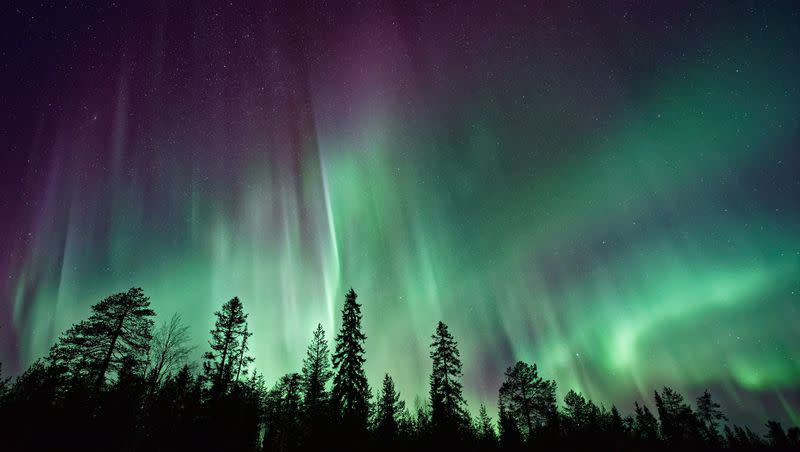Northern lights to be the brightest in 20 years

The last year proved to be an active one for the northern lights as the rays could be seen farther south into the United States than normal.
Scientists say it’s just the beginning of a peak that is coming in the next 18 months, where the lights are predicted to be the brightest and farthest reaching in 20 years.
Mark Miesch, a scientist for the National Oceanic and Atmospheric Administration and researcher at the University of Colorado — Boulder, told NBC News that activity is expected to steadily increase until fall 2024 when the lights will be at their brightest
“Skywatchers are excited,” Miesch told NBC.
Related
What causes the northern lights?
Aurora borealis (the northern lights) and aurora australis (the southern lights) are caused by disturbances in space weather that usually happen because of strongly magnetic sunspots, NBC reported. The particles are flung into space, some of which head toward the earth, and find weak points in the Earth’s magnetic field where they collide with the atmosphere and release energy to create a neon banner in the sky.
The resulting light rays can take on a variety of shapes, including their signature curtain waves that can be seen in the sky, per the Space Weather Prediction Center. As the night drags on, the rays can stretch out, twist and sway.
A good indicator of how strong or widespread the lights will be is the number of sunspots that are recorded, per NBC.
Related
What are the colors of the northern lights?
According to the National Park Service, the northern lights can vary in colors from deep blue to red, to purple. The colors will change depending on two factors, including what elements are hit by the energetic particles that come from the sun and the altitude of the phenomenon.
When the rays hit the most abundant gas, nitrogen, the result will be deep blue and red colors, mixing to make purple, per the park service. At lower altitudes of 59 miles, a green line that is characteristic of the lights is the boundary when oxygen exists in its atomic form.
At higher altitudes around 120 miles, the oxygen will create a red color instead of green.
Can you see the northern lights in the U.S.?
The northern lights can be seen in the United States, and as far down as Mexico, as a rare event that happened in 1958, per the University of Alaska Fairbanks.
Monday night, the lights were visible in the United States, as far south as Minnesota and Wisconsin, reported NBC.
An aurora forecast run by the University of Alaska Fairbanks helps the public know when and where to expect the lights on any given day in North America, Europe, and Alaska.
Related
What month is best to see the northern lights in the U.S.?
Equinoxes and solstices, such as the autumnal equinox that happened on Saturday, usually mean greater disruptions and gaps in the Earth’s magnetic field, Miesch told NBC.
The sun rotates around the sun every 27 days, per the university. Since there was an especially strong day on Monday, odds are they will be strong again around Oct. 22.
Where in the U.S. can you see the northern lights in 2023?
It’s hard to predict what states will be able to see the lights in the remaining months of 2023 and the beginning of 2024, but keeping an eye on the aurora tracker at the National Space Weather Prediction Center will give a heads-up on where and when the lights can be seen.
Can we see the northern lights in Utah?
The northern lights have been seen in Utah multiple times in the past year and were last seen on Sunday night.
Related
